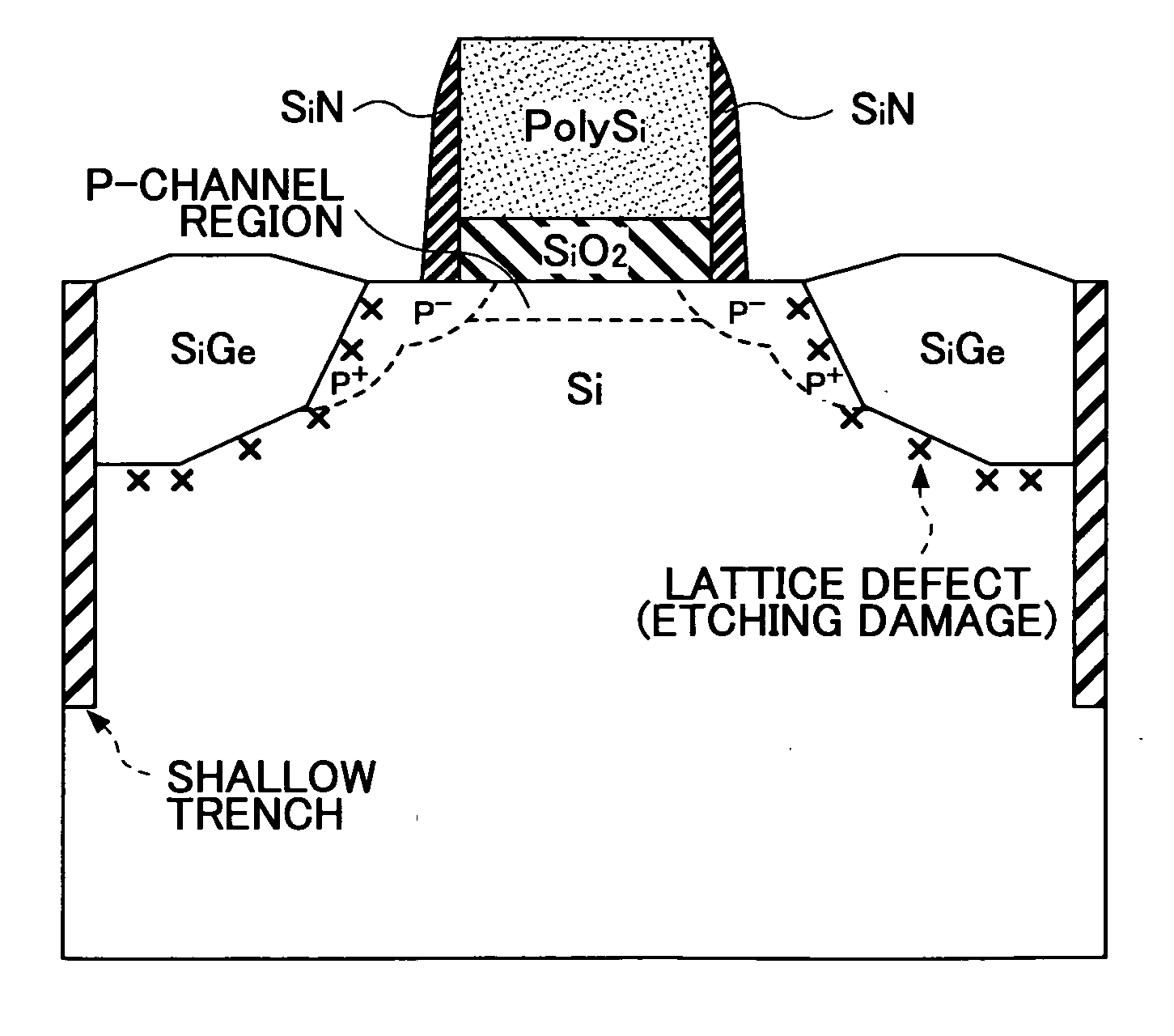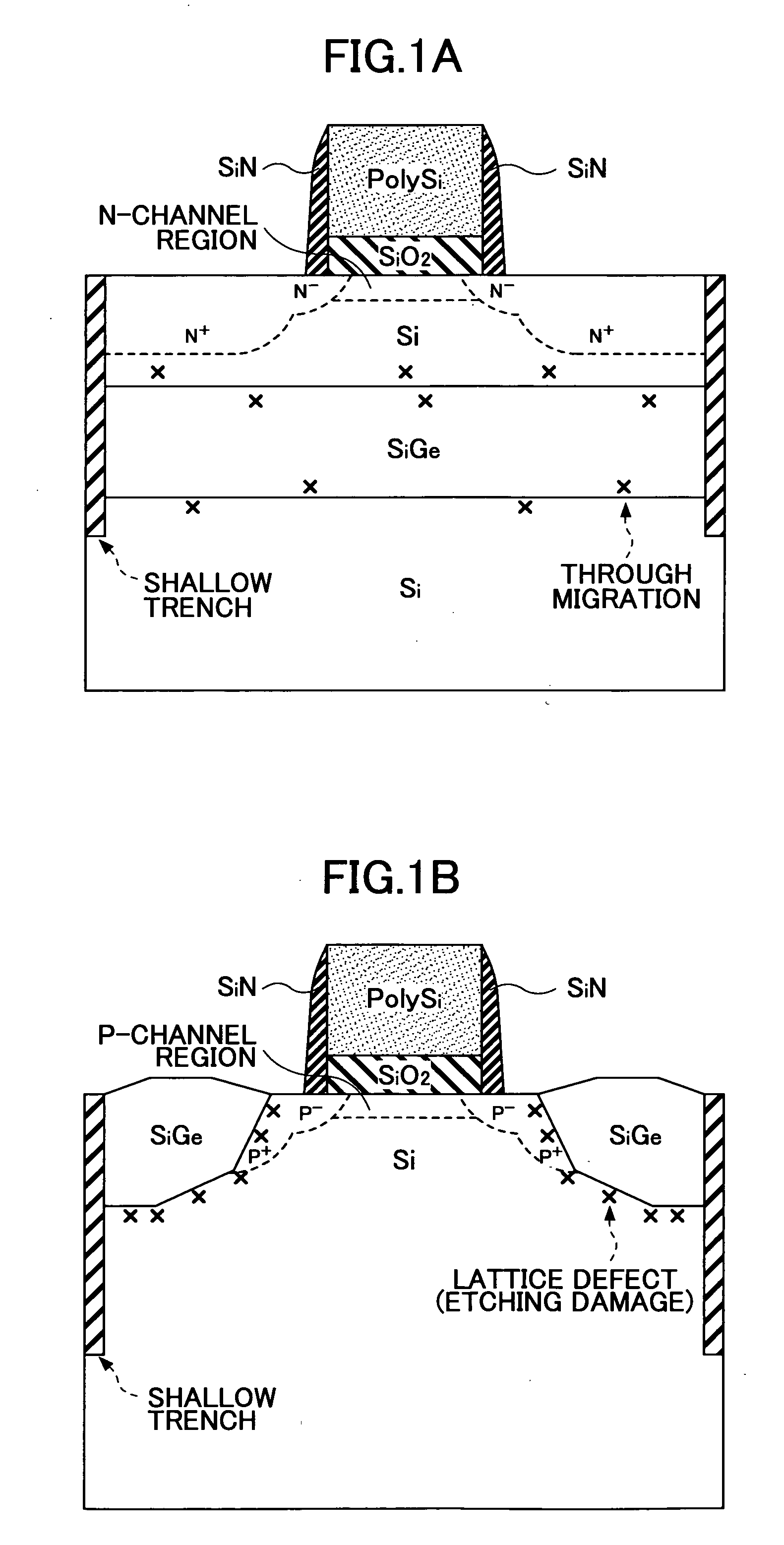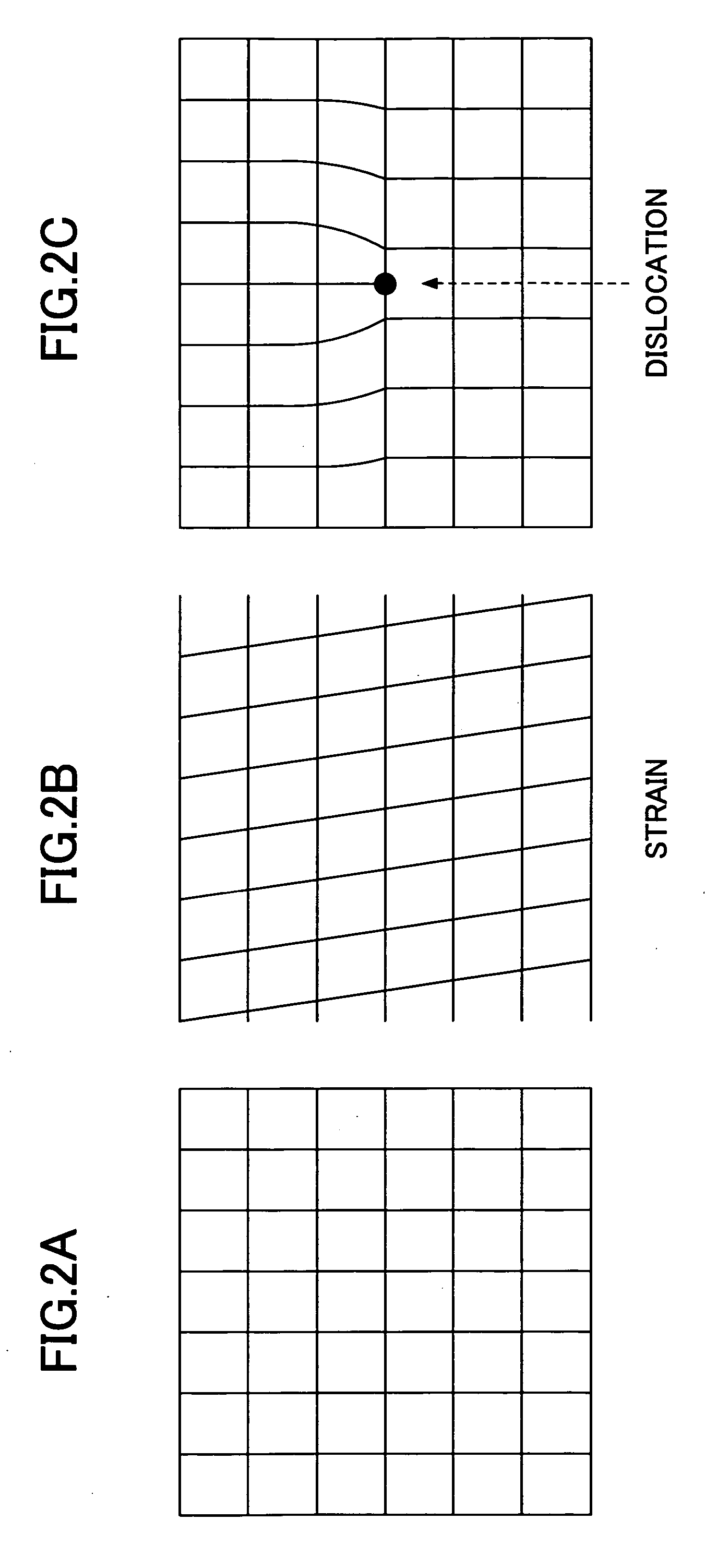Semiconductor device and manufacturing method thereof
a semiconductor device and manufacturing method technology, applied in semiconductor devices, baths, douches, etc., can solve the problems of increasing fluctuation and variation in device characteristics, affecting the performance of semiconductor devices, so as to reduce the density of the generated dislocation, reduce the mobility of the dislocation, and prevent the strain from being relieved
- Summary
- Abstract
- Description
- Claims
- Application Information
AI Technical Summary
Benefits of technology
Problems solved by technology
Method used
Image
Examples
Embodiment Construction
[0047]FIG. 4 is a cross-sectional view of a semiconductor device according to the first embodiment of the invention, and FIGS. 5A through 5E illustrate a semiconductor device fabrication method according the first embodiment. In the first embodiment, a semiconductor device with a p-type MOSFET is fabricated.
[0048] The semiconductor device shown in FIG. 4 comprises a silicon (Si) substrate 101, a gate insulating film 102, a gate electrode 103, and a sidewall 104. The silicon substrate 101 includes a p-channel region 111p, a source region 112, a drain region 113, and source / drain extensions (hereinafter referred to simply as “extensions”) 134.
[0049] The semiconductor device also comprises strain generating layers 121 that cause strain in the p-channel region 111p by applying a uniaxial compressive stress thereto. The strain generating layers 121 are localized strain generating layers embedded in grooves 131 (See FIG. 5D) formed one in each of the source region 112 and the drain regi...
PUM
 Login to View More
Login to View More Abstract
Description
Claims
Application Information
 Login to View More
Login to View More - R&D
- Intellectual Property
- Life Sciences
- Materials
- Tech Scout
- Unparalleled Data Quality
- Higher Quality Content
- 60% Fewer Hallucinations
Browse by: Latest US Patents, China's latest patents, Technical Efficacy Thesaurus, Application Domain, Technology Topic, Popular Technical Reports.
© 2025 PatSnap. All rights reserved.Legal|Privacy policy|Modern Slavery Act Transparency Statement|Sitemap|About US| Contact US: help@patsnap.com



